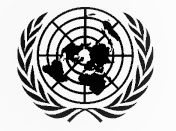The Secretary-General’s Mechanism to carry out prompt investigations in response to allegations brought to his attention concerning the possible use of chemical and bacteriological (biological) and toxin weapons was developed in the late 1980s. Triggered by a request from any Member State, the Secretary-General is authorized to launch an investigation including dispatching a fact-finding team to the site(s) of the alleged incident(s) and to report to all United Nation Member States. This is to ascertain in an objective and scientific manner facts of alleged violations of the 1925 Geneva Protocol, which bans the use of chemical and biological weapons, or other relevant rules of customary international law.
The roster of experts and laboratories provided by Member States and the Guidelines and Procedures for the conduct of investigations constitute the key elements of the Mechanism. Member States encouraged the Secretary-General in September 2006 to update the roster of experts and laboratories, as well as the technical guidelines and procedures, available to him for the timely and efficient investigation of alleged use.
The Office for Disarmament Affairs has been working with Member States to update the roster of experts and laboratories and the technical appendices of the guidelines and procedures so that they fully correspond with the rapid and substantial developments that have occurred in the biological area since the 1980s and also take into account the entry-into-force of the Chemical Weapons Convention (CWC) and the establishment of the Organisation for the Prohibition of Chemical Weapons (OPCW) in 1997.
The Office for Disarmament Affairs organized, in 2007, two meetings of a group of experts with the participation of representatives of a number of relevant international organizations. The group discussed the update of the 1989 Guidelines and Procedures. It decided to leave the main document from 1989 unaltered and recognized that a broad review process would necessarily entail the direct involvement of Member States. The group prepared revisions of the Appendices associated with the guidelines and procedures, in particular taking into account the developments in the biological area. The updated Appendices focus on relevant technical biological aspects of investigation of alleged use.
In accordance with the current Guidelines and Procedures “any interested Member State may designate to the Secretary-General relevant specialized training or courses available to qualified experts in support of their possible role on his behalf in carrying out investigations of possible use of chemical, biological and toxin agents, in order to facilitate achievement on a common basis of understanding and operation.” The first-ever training course for experts was offered by the Government of Sweden and was conducted in cooperation with ODA in Umea, Sweden from 25 May to 5 June 2009.
In order to further cooperation and enhance technical capabilities of investigation of alleged use, the United Nations and the World Health Organization (WHO) signed a Memorandum of Understanding concerning WHO’s support to the Secretary-General’s mechanism for investigation of alleged use.
For more information on the current investigation into the alleged use of chemical weapons in the Syrian Arab Republic, click here
To view the report of the Secretary-General’s investigation into the alleged use of chemical weapons in the Syrian Arab Republic, concerning the incident which occurred in the Ghouta area of Damascus on 21 August 2013, click here
To view the Fact Sheet in Arabic and English summarizing the Secretary-General’s report, click here
To view the OPCW-UN Joint Mission Reports, click here
To view key documents related to the Secretary-General’s Mechanism for Investigation of Alleged Use of Chemical and Biological Weapons click here

